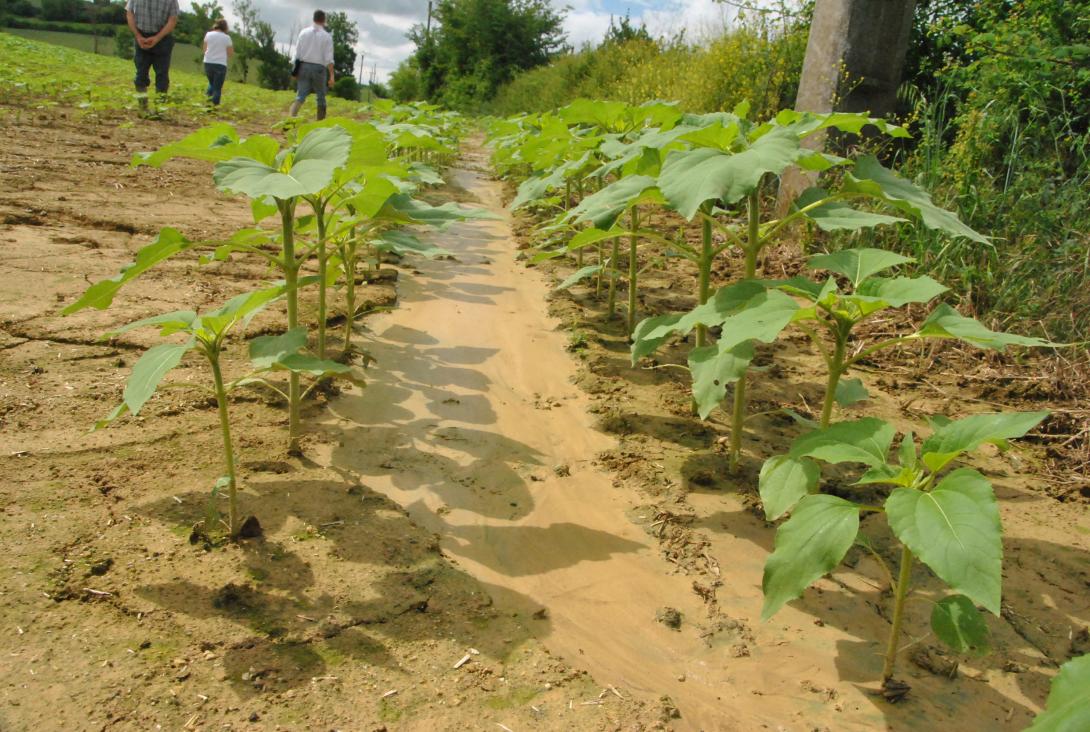
Area characterisation:
300 km of hedgerows disappeared in 30 years (1980-2008) in the Lèze valley, i.e. a quarter of all hedgerows. As a result, the valley’s slopes are exposed to recurrent flooding from mudflows, which
reached their peak during the storms of May and June 2007. To tackle this threat, the SMIVAL, which brings together the valley’s 30 communes, implemented a public policy of planting hedgerows, enabling 30 km of hedgerows to be replanted over the period 2009-2017. These flood-control hedges, located at the bottom of the valley or on the slopes, help to intercept runoff and reduce the risk of flooding by delaying the spread of high-water peaks and holding back mudflows in steep plots.
Objective:
- Reduce the risk of flooding and mudslides
- Reduce the river’s energy and erosion potential
- Recreate a traditional heterogeneous landscape
- Increase biodiversity and restore connectivity
Images
Financing:
3.1M€ for PAPI Lèze (2006-2016), of which 317 k€ for hedges.
State, Occitanie region, Ariège and Haute-Garonne departments, Adour-Garonne Water Agency,
European Commission
Potential impacts/benefits:
BENEFITS REGARDING TARGETED ADAPTATION ISSUES
2D hydraulic modelling (HERMEL et al., 2010) indicates that covering a floodplain with evenly spaced hedgerows over a 40 km stretch can delay the propagation of the high-water peak by 10% but would have a negligible effect on peak flow. Hydrological modelling of the entire Lèze valley (AGERIN 2006) indicates that transforming a landscape devoid of hedgerows into bocage would reduce peak flood discharge by around 40%.
BENEFITS REGARDING THE PROTECTION, MANAGEMENT AND RESTORATION OF BIODIVERSITY
It is clearly recognised that increasing the length of hedgerows (which are not used for forestry) is beneficial for biodiversity, both fauna and flora. However, no ecological monitoring was carried out
during this project.
OTHER BENEFITS ACHIEVED
Educational benefit : a botanical trail has been set up by pupils from a local school. It enables local residents to learn more about the ecosystem in which they live.
Actions:
Living hedges made up of 3 to 5 rows of native trees, shrubs or bushes suited to the local soil, and to climatic and epidemic conditions. The hedges are planted on the floodplain, perpendicular to the riverbed, and are regularly spaced (every 300 to 500m). The trial site and planting programme were launched in 2009-2010 with the planting of 2 pilot hedges. In all, between 2009 and 2017, around 30km of hedges were planted across the Lèze floodplain and on the hillsides, at a rate of 5km per year.
Transferability of result:
Levers for success
• Feedback : The effectiveness of windbreak hedges
against risk is a good mediation tool to engage
farmers in creating these hedges, which lead to an
increase in biodiversity..
Organisations:
SMIVAL (Syndicat Mixte Interdépartemental de la Vallée de la Lèze, an inter-departmental grouping of various organisations)
Contacts:
Thomas Breinig
Director of SMIVAL, Syndicat Mixte Interdépartemental de la Vallée de la Lèze
t.breinig@smival.fr
NBS goals:
- Restoring ecosystems and their functions
- Developing climate change adaptation
- Improving risk management and resilience
- Multi-functional nature-based watershed management and ecosystem restoration
NBS benefits:
- Developing climate change adaptation; improving risk management and resilience
- Better protection and restoration of coastal ecosystems
- Reduce flood risk
- Reduce run-off
